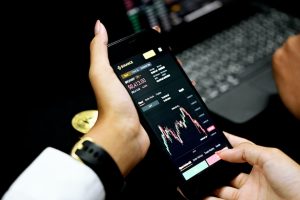Forex trading is a complex and dynamic field that requires a robust and efficient trading platform. A forex trading platform is a software program that enables traders to place and manage trades in the foreign exchange market. If you are interested in developing a forex trading platform, there are several essential factors that you need to consider. In this article, we will guide you through the key steps to create a forex trading platform.
1. Understand the Forex Market
The first step to creating a forex trading platform is to understand the forex market. The foreign exchange market is the largest financial market globally, with an average daily trading volume of over $5 trillion. The forex market is where currencies are traded against each other, and the prices of currencies fluctuate constantly.
To develop a forex trading platform, you need to have a good understanding of the forex market and its participants. You need to know how the market works, what influences forex prices, and the different types of forex traders.
2. Define the Features and Functionality
The next step is to define the features and functionality of your forex trading platform. You need to decide what features your platform should have and how it should function. Some of the essential features of a forex trading platform include:
– Real-time quotes and charts
– Order management
– Risk management tools
– News and economic calendar
– Technical analysis tools
– Customizable interface
– Multi-language support
– Backtesting and optimization tools
You also need to decide which trading instruments your platform will support, such as forex, commodities, indices, stocks, and cryptocurrencies.
3. Choose a Technology Stack
The technology stack is the set of technologies and tools used to develop your forex trading platform. You need to choose a technology stack that is scalable, reliable, and secure. Some of the popular technologies used to develop trading platforms include:
– Programming languages: Java, Python, C++, C#, and JavaScript
– Web development frameworks: Angular, React, and Vue.js
– Database management systems: MySQL, PostgreSQL, and MongoDB
– Cloud computing services: Amazon Web Services, Microsoft Azure, and Google Cloud Platform
4. Design the User Interface
The user interface (UI) is the part of your forex trading platform that users interact with. You need to design a user-friendly and intuitive UI that makes it easy for traders to navigate and use the platform. Your UI should be responsive and work seamlessly across different devices and screen sizes.
Some of the key elements of a good UI design include:
– Simple and clean layout
– Clear and concise navigation
– Consistent design elements
– High-quality graphics and icons
– Contrast and color schemes that are easy on the eyes
– Adequate whitespace to reduce clutter
5. Develop the Trading Platform
Once you have defined the features, chosen the technology stack, and designed the UI, it’s time to start developing your forex trading platform. You need to follow the best practices of software development, such as:
– Write clean and well-structured code
– Use version control systems
– Perform unit testing and integration testing
– Follow agile development methodologies
– Ensure data security and encryption
– Implement robust error handling and logging
6. Test and Launch the Trading Platform
Before launching your forex trading platform, you need to test it thoroughly to ensure that it works as intended and is free of bugs and errors. You should perform various types of testing, such as functional testing, performance testing, and security testing.
Once you are satisfied with the quality and stability of your platform, you can launch it to the market. You need to have a marketing strategy in place to promote your platform and attract traders.
Conclusion
Developing a forex trading platform is a challenging task that requires a combination of technical expertise, market knowledge, and UI design skills. By following the steps outlined in this article, you can create a robust and efficient trading platform that meets the needs of forex traders. Remember to keep your platform up-to-date with the latest technology and market trends to stay ahead of the competition.





